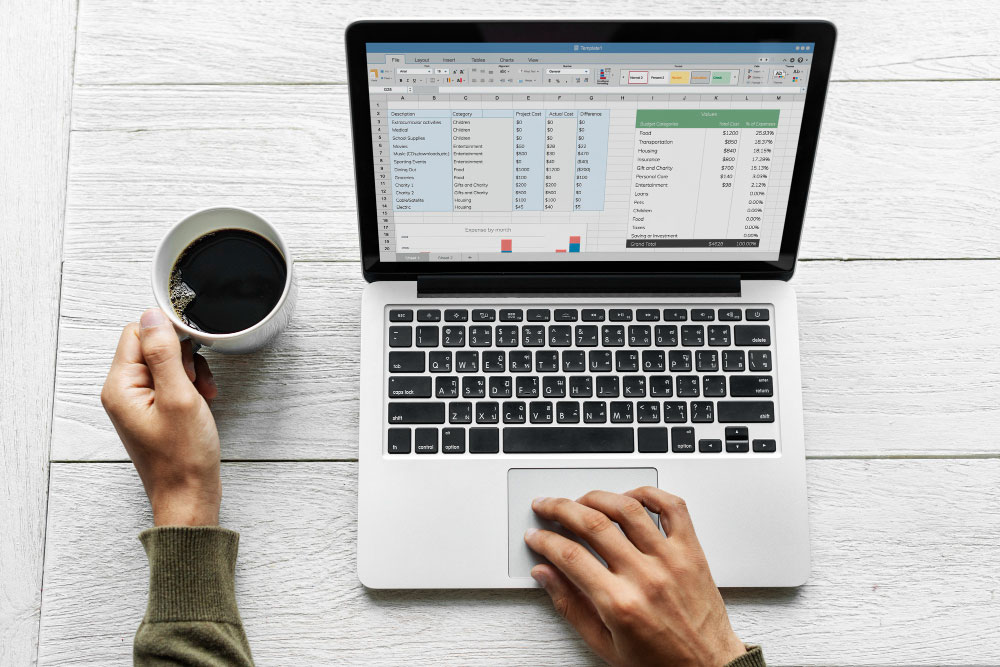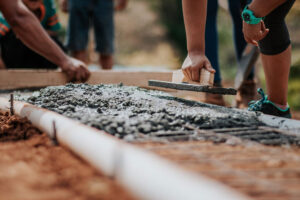Introduction
Hey there! So, you’re thinking about becoming a data scientist? That’s awesome! I mean, who wouldn’t want to dive into a world where numbers, patterns, and cool tech come together to solve real problems? It’s like being a detective, but instead of chasing criminals, you’re chasing insights. I’ve been down this road myself, and trust me, it’s exciting, challenging, and totally worth it. Let’s walk through this journey together no fancy jargon, just simple steps and a bit of heart for how to become a Data Scientist.
What’s a Data Scientist Anyway?
Before we jump in, let’s get clear on what a data scientist does. Imagine someone who looks at piles of information like sales numbers, customer habits, or even weather data and figures out what it all means. They use tools like computers and math to spot trends or make predictions. It’s not just about crunching numbers, though; it’s about telling a story with them. Companies love data scientists because they help make smart decisions. Cool, right?
I remember when I first heard about this job. I thought, “Wow, that sounds like magic!” But it’s not; it’s skills you can learn. And I’m here to show you how.
Why This Career Rocks
Okay, let’s talk about why you’d even want to do this. For me, it was the mix of creativity and problem-solving. You get to play with data, build things, and see your work make a difference. Plus, it pays pretty well, and there are tons of jobs out there. The world is drowning in data, and people need help making sense of it. That’s where you come in.
But it’s not just about money or demand. There’s a thrill in figuring stuff out, like when you crack a puzzle and go, “Aha!” That’s what keeps me hooked.
Step 1: Get Curious About Data
Here’s the thing: you don’t need to be a genius to start. You just need to be curious. Ask yourself, “What can data tell me?” Maybe you wonder why some movies flop or why your favorite coffee shop is always busy on Fridays. That curiosity is your fuel.
Start small. Look at stuff around you, like your phone’s weather app or your grocery receipts. What patterns do you see? That’s the mindset of a data scientist. No pressure, just play around with ideas.
You don’t need to be a brainiac to start with data just a little curiosity! It’s all about wondering what’s behind the numbers you see every day, like why some things happen or what they could mean. I remember feeling that spark when I started asking questions it’s like a treasure hunt. Let that wonder guide you; it’s the first step to digging into the data world. Trust me, once you start, you’ll want to know more!
A Personal Insight: My First “Data Moment”
I’ll never forget the time I tracked how much time I spent on my phone. I wrote down the hours every day for a week. By the end, I saw I was wasting way too much time scrolling. That little experiment made me realize that data isn’t just numbers; it’s about understanding life. That’s when I got hooked.
Step 2: Learn the Basics of Math and Stats
Now, don’t freak out when I say “math.” I’m not talking about crazy equations you’ll never use. You just need the basics like averages, percentages, and maybe a little probability. Think of it as learning the rules of a game. Once you know them, you can play.
Math and stats sound scary, but they’re not as bad as you think. You just need the simple stuff like how to find an average or guess what’s likely to happen. I used to freeze up at numbers, but taking it slow made it click. It’s like learning a recipe you start with the basics, and soon you’re cooking up insights. No need to rush; it’s all about building a foundation.
Statistics is your friend here. It’s all about making sense of data. You’ll learn things like:
- How to spot what’s normal or weird in a bunch of numbers.
- How to guess what might happen next based on what’s happened before.
- How do you tell if something matters or if it’s just random?
If math scares you, don’t worry. I was terrible at it in school. But with practice, it gets easier. Check out free resources like Khan Academy to brush up. They explain everything in a way that doesn’t make your head spin.
Step 3: Pick Up Some Tech Skills
Data scientists use tools to do their magic, and you’ll need to learn a couple. Don’t panic; it’s like learning to cook with a new recipe. You start simple and get better over time.
Tech skills are your ticket to playing with data, and they’re easier to grab than you’d guess. Think of coding or tools as new toys fun once you get the hang of them. I started small, fumbling at first, but it felt so good to see things work. You’ll need a bit of patience, but soon you’ll be shaping data like a pro. It’s worth the effort!
Coding: Your Superpower
You’ll want to learn a programming language. Python is a great one—it’s easy and super popular. It’s like the Swiss Army knife of coding. Another option is R, which is awesome for stats. Start with:
- Writing little bits of code to move data around.
- Using code to draw charts or graphs.
- Playing with ready-made tools (called libraries) to save time.
I started with Python, and my first program was a mess—it just added two numbers! But I felt like a rock star. You can try free courses on Codecademy to get going.
Tools to Know
Besides coding, get comfy with:
- Excel: It’s basic but powerful for small data stuff.
- SQL: This helps you talk to databases (think of it as asking a librarian for a specific book).
- Visualization Tools: Things like Tableau or Power BI make your data look pretty and understandable.
Step 4: Dig Into Data Science Topics
Once you’ve got the basics, it’s time to explore the meaty stuff. This is where you learn how to really work with data. Don’t rush; just enjoy the ride.
Tech skills are your ticket to playing with data, and they’re easier to grab than you’d guess. Think of coding or tools as new toys fun once you get the hang of them. I started small, fumbling at first, but it felt so good to see things work. You’ll need a bit of patience, but soon you’ll be shaping data like a pro. It’s worth the effort!
Key Areas to Focus On
- Data Cleaning: Making messy data neat and usable.
- Machine Learning: Teaching computers to learn from data (sounds fancy, but it’s doable).
- Storytelling: Turning numbers into ideas people care about.
I love this part because it’s like being a chef; you take raw ingredients (data) and turn them into something tasty (insights). Websites like Coursera have courses to guide you.
Case Study: The Messy Spreadsheet
A friend once asked me to look at her small business’s sales data. It was a disaster: missing numbers, typos, you name it. I spent hours cleaning it up, and when I showed her a simple chart of her best-selling products, she was blown away. That’s when I realized how much impact this work can have.
Step 5: Practice, Practice, Practice
You can’t just read about this stuff; you’ve got to do it. It’s like riding a bike; you’ll wobble at first, but then you’ll soar. Find datasets online (try Kaggle) and mess around with them. Ask questions like:
- What’s hiding in this data?
- What story can I tell?
The more you practice, the more confident you’ll get. I used to spend my weekends tinkering with random data just for fun. It’s nerdy, but it paid off.
You can’t just read about data you’ve got to get your hands dirty. Practicing is how you turn ideas into skills, and it’s okay to stumble. I spent hours messing around, sometimes failing, but every try made me better. It’s like riding a bike; you wobble until you don’t. Keep at it, and you’ll feel that confidence grow with every step.

Step 6: Build Something to Show Off
Here’s a big one: Make a portfolio. It’s like a scrapbook of your data adventures. Create projects that show what you can do. Maybe analyze some public data or build a simple prediction tool. Put it online. GitHub is a great spot (GitHub).
When I made my first project (a little tool to predict movie ratings), I was so proud. It wasn’t perfect, but it showed I could think and build. Employers love that.
Making something to share is a big deal it’s your chance to shine! Whether it’s a little project or a cool chart, it shows what you can do. I felt so proud when I finished my first one, even if it wasn’t perfect. It’s like crafting a gift you put your heart in, and others see your effort. Start small and let it grow!
Step 7: Connect With People
This isn’t just about skills; it’s about people too. Talk to other data scientists. Join online groups, go to meetups, or even chat on X. Ask questions, share your wins, and learn from others.
I met my first mentor at a local tech event. She was so kind and gave me tips that saved me months of stumbling. You’d be surprised how friendly this community is.
Step 8: Land That Job (Or Keep Growing)
Ready to work? Start applying for jobs; look for titles like “data analyst” or “junior data scientist” if you’re new. Tailor your resume to show your skills and projects. Don’t get discouraged if it takes time; keep learning while you search.
Getting a data job is exciting, but it takes time so don’t stress if it’s not instant. You’ll apply, tweak your skills, and keep pushing. I had my share of “not yets,” but every step taught me something. If you’re not ready, no worries just keep learning. It’s about finding your spot, whether now or later, and enjoying the ride.
If you’re not ready for a job, that’s fine! Keep building your skills. The beauty of this field is that there’s always more to explore.
Personal Insight: My First Rejection
I applied for a data job early on and got rejected. I was crushed. But I asked for feedback, worked on my weak spots, and tried again. The next “yes” felt ten times sweeter because of that “no.”
Challenges You Might Face
Let’s be real; it’s not all smooth sailing. You might feel overwhelmed by all there is to learn. Or maybe you’ll hit a wall with coding. That’s normal. Take breaks, ask for help, and remember why you started. I’ve had days where I wanted to quit, but pushing through made me stronger.
Big data isn’t always smooth sailing you’ll hit bumps. Maybe the tools confuse you, or the data’s a mess. I’ve had days where I wanted to toss my laptop out the window! It’s normal to feel stuck sometimes, but those tough moments make you tougher. Take a breath, ask for help, and keep going it’s part of the journey.
The Joy of Being a Data Scientist
When you get it right, it’s amazing. You see your work help someone, a business, a team, even yourself. It’s a mix of brainpower and heart, and that’s what makes it special. I still get a kick out of finding something cool in data, and I bet you will too.
Being a data scientist is a blast when it clicks. You uncover secrets in the numbers and help solve real problems it’s so rewarding! I still get a thrill when I figure something out; it’s like cracking a code. It’s not just work it’s a mix of curiosity and creativity that keeps you hooked. You’ll feel it too!
FAQs: Your Burning Questions Answered
Do I need a degree to become a data scientist?
Nope! A degree helps (especially in math or tech), but lots of people get in without one. Skills and projects matter more. I don’t have a fancy degree, and I’m doing fine.
How long does it take to learn this stuff?
It depends. If you go hard, it may take 6 months to a year to get started. But it’s a lifelong journey. I’m still learning after years!
What if I’m bad at math?
You don’t need to be a math wizard. Start with the basics and grow. I was awful at first, but practice made it click.
Can I work from home as a data scientist?
Totally! Lots of jobs are remote now. It’s one reason I love this field: I can work in my pajamas.
How much money can I make?
It varies, but starting salaries are often decent think $60,000 or more a year in many places. With experience, it can climb way higher.
Case Studies: Real-Life Lessons
Case Study 1: The Late-Night Breakthrough
I once stayed up late trying to figure out why a dataset wasn’t working. I was tired and grumpy, but then I spotted a tiny mistake in the code. Fixing it unlocked everything. Lesson? Patience pays off.
Case Study 2: The Team Win
A group I worked with needed to predict customer demand. We all pitched in some cleaned data, others built models. Seeing it come together was like a team high-five. Lesson? Collaboration is key.
Case Study 3: The Overconfident Flop
I once thought I’d nailed a project without double-checking. Turned out I’d missed a huge error, and it flopped. Lesson? Always test your work.
Conclusion
Becoming a data scientist isn’t just about skills; it’s about growing as a person. You’ll stumble, you’ll shine, and you’ll find your way. I’ve been there, doubting myself one day and celebrating the next. If I can do it, so can you. Take it one step at a time, enjoy the ride, and let’s make sense of the world together.
Wrapping up, becoming a data scientist is a wild, wonderful adventure. It’s not about being perfect it’s about growing, trying, and finding joy in the process. I’ve stumbled plenty, but every moment brought me closer to where I am now. You’ve got this take it one step at a time, and let’s see where it takes you. I’m cheering for you!
Got questions? Feel free to ask. I’m rooting for you!
How to Build a Successful Career in Tech










2 thoughts on “How to Become a Data Scientist in 2025: A Step-by-Step Guide!”